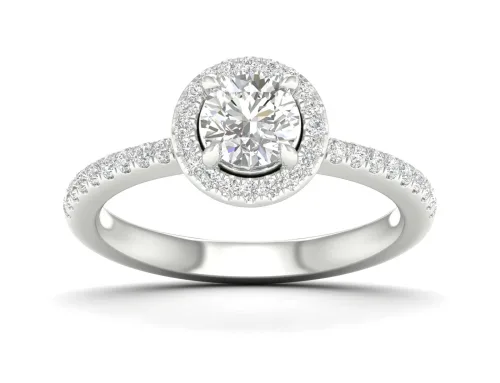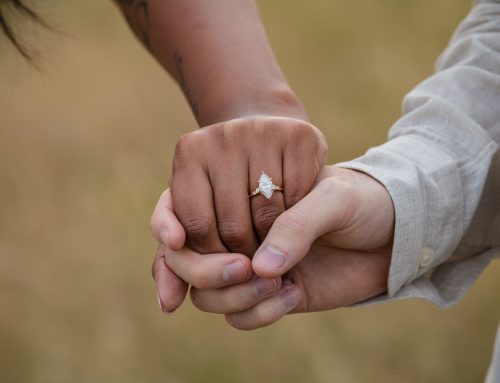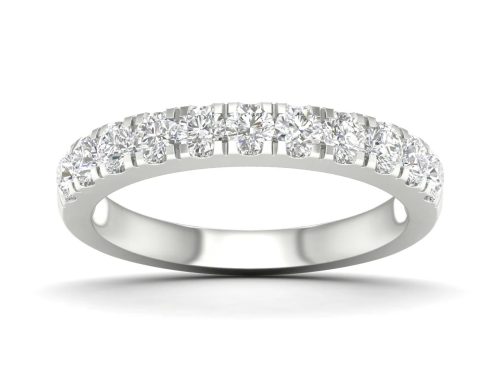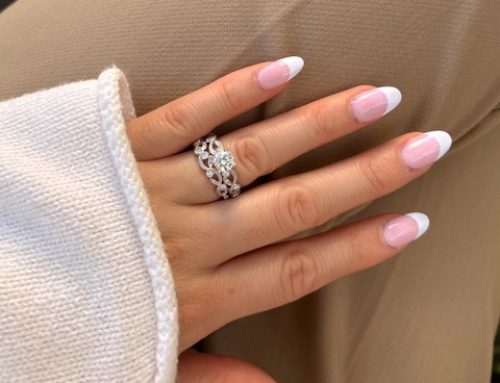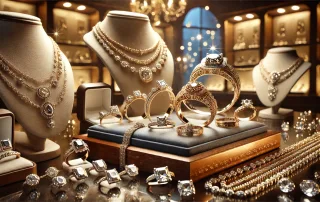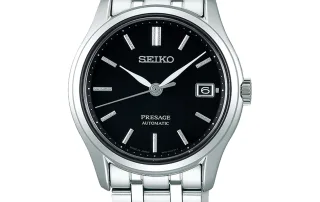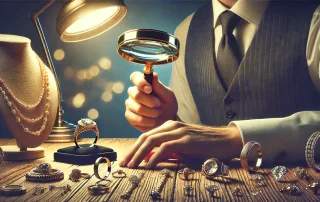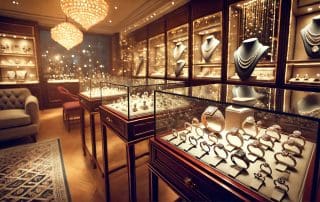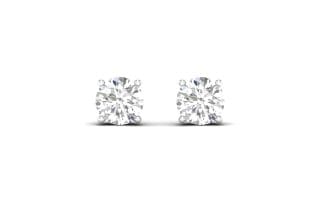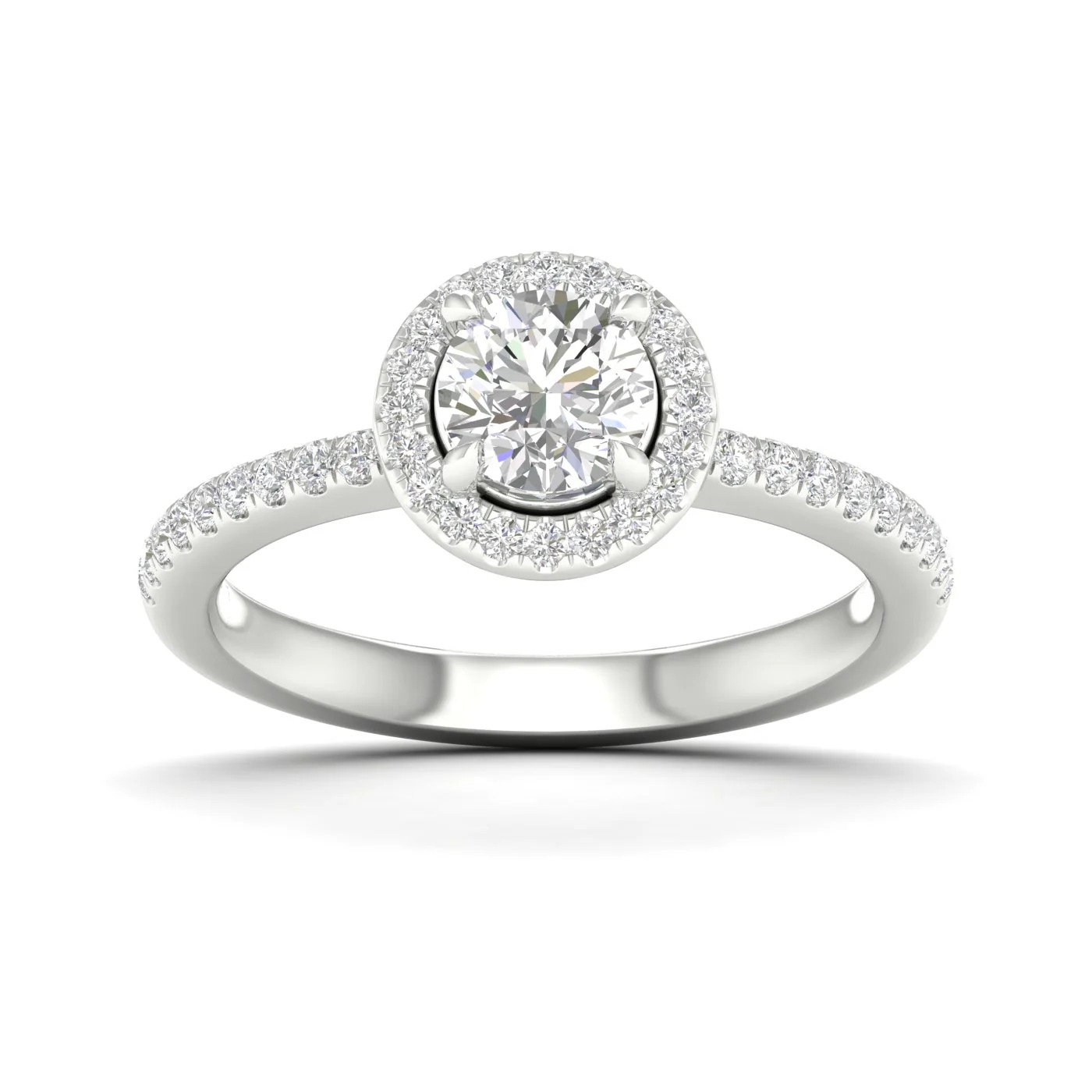
Choosing the perfect engagement ring is one of the most significant decisions you’ll make in your lifetime. It’s not just about the ring itself, but about the promise and love it symbolizes. Whether you’re shopping for the ring together or planning a surprise proposal, there’s a lot to consider. From understanding the 4 Cs of diamonds to choosing the right style that matches your partner’s personality, this guide will walk you through everything you need to know to make an informed decision.
Understanding the 4 Cs of Diamonds
When it comes to diamonds, the 4 Cs—cut, color, clarity, and carat—are the universal standards for assessing a diamond’s quality. Each “C” plays a crucial role in determining the overall beauty and value of the stone.
1. Cut
The cut of a diamond is perhaps the most critical factor because it influences the stone’s brilliance. The cut refers to how well the diamond’s facets interact with light. Even with perfect color and clarity, a poorly cut diamond will look dull. When we talk about cut, we’re not just referring to the shape of the diamond (round, oval, princess, etc.), but to the quality of the angles, proportions, facets, and finishing details. A well-cut diamond will reflect light from one facet to another and then disperse it through the top of the stone, making it sparkle brilliantly.
2. Color
Diamond color is graded on a scale from D (colorless) to Z (light yellow or brown). The closer a diamond is to being colorless, the more valuable it is. Colorless diamonds allow more light to pass through, resulting in a more brilliant sparkle. However, some people prefer diamonds with slight color for a warmer look, especially when set in certain metals like yellow gold. When selecting the color, consider your partner’s style and what they might prefer—whether it’s a completely colorless stone or one with a hint of color.
3. Clarity
Clarity refers to the presence of internal or external imperfections, known as inclusions and blemishes, respectively. Most diamonds have some imperfections, but many are not visible to the naked eye. The clarity scale ranges from Flawless (no inclusions or blemishes visible under 10x magnification) to Included (inclusions and/or blemishes visible to the naked eye). While higher clarity diamonds are more expensive, many inclusions are microscopic and do not affect the stone’s overall beauty. It’s essential to balance clarity with other factors to stay within your budget.
4. Carat
Carat is the measure of a diamond’s weight. It’s often mistaken as a measure of size, but carat actually refers to how much the diamond weighs. While carat weight can influence the size of the diamond, the cut also plays a significant role in how large the diamond appears. A well-cut diamond can appear larger than a poorly cut diamond of the same carat weight. When choosing the carat, consider your partner’s style and whether they prioritize size or quality.
Exploring Different Engagement Ring Styles and Settings
Once you’ve got a grasp of the 4 Cs, it’s time to explore the various styles and settings available. The setting refers to how the diamond is mounted on the ring, and the style is the overall design of the ring.
1. Solitaire Setting
The solitaire setting is a classic and timeless choice, featuring a single diamond that stands alone in the spotlight. This setting highlights the beauty of the diamond, making it an ideal choice if you’re going for simplicity and elegance. Solitaires can be paired with any diamond shape, and they tend to showcase the diamond’s cut more prominently.
2. Halo Setting
A halo setting features a center stone surrounded by a circle (or “halo”) of smaller diamonds. This setting adds extra sparkle and can make the center diamond appear larger. The halo setting is popular for those who love a glamorous, vintage-inspired look. You can also experiment with different shapes and colors for the halo diamonds to create a unique design.
3. Pavé Setting
In a pavé setting, small diamonds are set closely together along the band of the ring, creating a continuous sparkle. The name “pavé” comes from the French word for “paved,” referring to how the diamonds are set like cobblestones. This setting adds a touch of luxury and complements the central diamond beautifully, making the ring appear more intricate and sophisticated.
4. Three-Stone Setting
The three-stone setting features three diamonds (or gemstones) set in a row, typically symbolizing the past, present, and future of your relationship. This setting offers a balanced look and allows you to play with different shapes or sizes for the side stones, adding a personal touch. It’s a meaningful choice for those who want their ring to tell a story.
5. Vintage and Antique Styles
Vintage and antique-style rings are perfect for those who appreciate history and intricate details. These rings often feature filigree work, milgrain edges, and unique shapes that give them an old-world charm. Whether it’s an actual antique or a new ring designed in a vintage style, these rings are rich in character and perfect for someone who loves one-of-a-kind pieces.
6. Modern and Minimalist Styles
For a contemporary and sleek look, modern and minimalist rings are a great choice. These rings often feature clean lines, geometric shapes, and a focus on the quality of the materials rather than excessive detailing. If your partner has a modern sense of style, a minimalist ring with a simple band and a well-cut diamond might be the perfect fit.
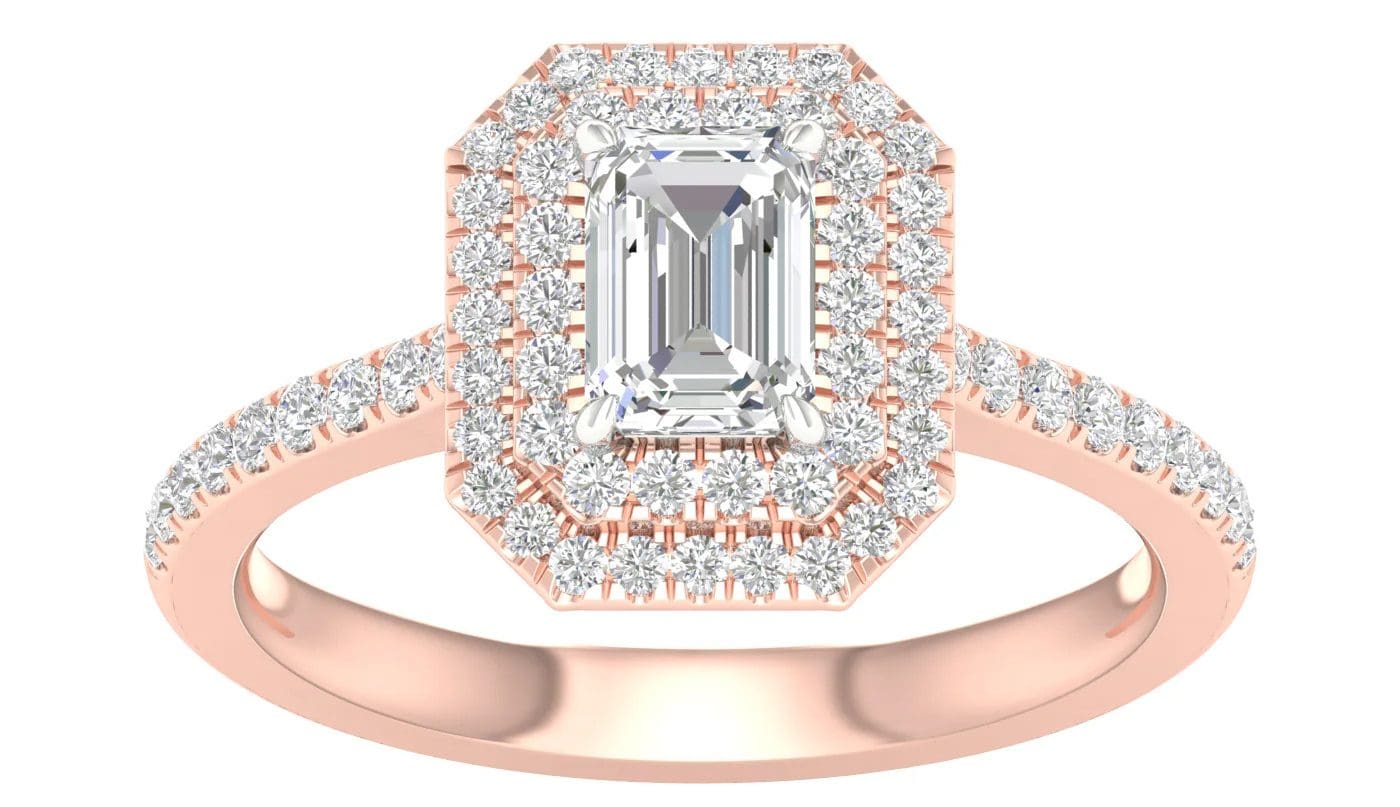
Tips for Choosing a Ring That Matches Your Partner’s Style
Now that you know the basics of diamonds and ring settings, it’s time to consider your partner’s personal style. This ring is something they will wear every day, so it should reflect their taste and lifestyle.
1. Pay Attention to Their Jewelry Preferences
Take note of the jewelry your partner typically wears. Do they prefer gold, silver, or platinum? Are their jewelry choices bold and chunky, or do they lean towards delicate and understated pieces? Observing these details will give you clues about what they might like in an engagement ring.
2. Consider Their Lifestyle
Think about your partner’s daily activities. If they lead an active lifestyle or work with their hands, a more durable setting like a bezel or flush setting might be ideal. These settings offer extra protection for the diamond, making the ring less likely to snag or get damaged.
3. Reflect Their Personality
The engagement ring should be a reflection of your partner’s personality. If they are someone who loves vintage items, a ring with antique details might be perfect. If they appreciate modern design, a minimalist ring with a unique diamond shape could be the way to go. Don’t be afraid to choose a ring that reflects who they are rather than just what’s trending.
4. Get a Second Opinion
If you’re unsure about what to choose, don’t hesitate to ask for help. Whether it’s a close friend, family member, or even a jeweler, getting a second opinion can provide valuable insights. Some jewelers even offer custom design services, allowing you to create a ring that’s truly unique and tailored to your partner’s preferences.
5. Budget Wisely
Finally, set a budget that you’re comfortable with. Engagement rings are a significant investment, but that doesn’t mean you have to overspend. By prioritizing the aspects that matter most to your partner—whether it’s the size of the diamond, the setting, or the overall design—you can find a ring that’s both beautiful and within your budget.
Conclusion
Choosing the perfect engagement ring is a journey that combines knowledge, love, and a deep understanding of your partner’s preferences. By considering the 4 Cs of diamonds, exploring various
styles and settings, and keeping your partner’s unique style in mind, you can find a ring that they will cherish forever. Remember, the best ring isn’t just about the carat weight or the price tag—it’s about finding a piece that symbolizes your love and commitment.
Check out our other posts about engagement rings!
FAQs
What is the most important of the 4 Cs?
The cut is often considered the most crucial of the 4 Cs because it determines how well the diamond reflects light, impacting its brilliance and sparkle.
How can I find out my partner’s ring size without them knowing?
You can borrow one of their rings and have it sized by a jeweler, or you can trace the inside of the ring on a piece of paper and bring it to the jeweler for measurement.
Are there ethical concerns I should consider when buying a diamond?
Yes, consider purchasing a diamond that is certified as conflict-free. You can also explore lab-grown diamonds, which are an ethical and environmentally friendly alternative.
Can I design a custom engagement ring?
Absolutely! Many jewelers offer custom design services where you can choose the diamond, setting, and any additional details to create a one-of-a-kind ring.
How much should I spend on an engagement ring?
There’s no set rule for how much to spend. The most important thing is to choose a ring that fits your budget and reflects your partner’s style and preferences.
Latest Posts
Why Jewelry Is Important: Celebrating the Artistry of Bijouterie Bserkos in Laval
Jewelry holds an unparalleled place in our lives, connecting us [...]
Why Seiko Watches Are the Perfect Blend of Tradition and Innovation
When it comes to the world of luxury timepieces, Seiko [...]
Real or Fake? 5 Simple Tricks to Spot Authentic Jewelry
When shopping for fine jewelry, it’s easy to get overwhelmed [...]
Why Bijouterie Bserkos Shines Brighter than any other Jewelry Store in Laval
When it comes to finding the perfect piece of jewelry [...]
How are Diamonds Graded? A Complete Guide to Diamond Grading
When you're shopping for a diamond, one of the most [...]
10 Must-Have Jewelry Pieces for Every Wardrobe
Jewelry is more than just an accessory; it’s a statement [...]

